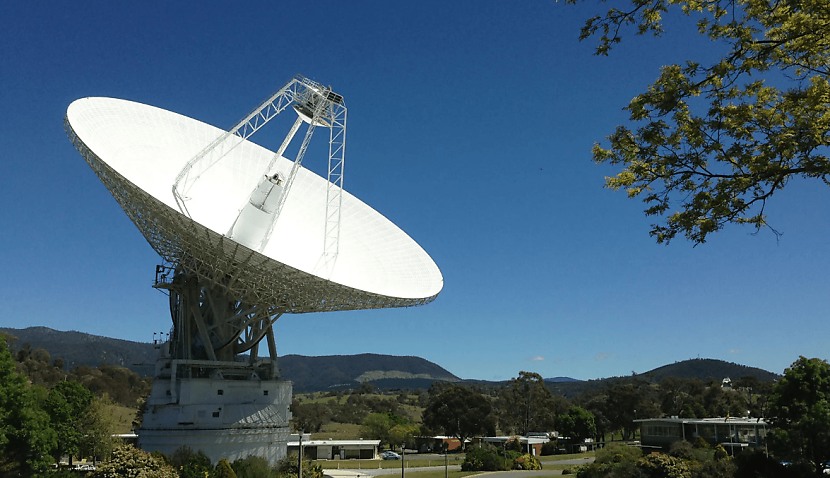
The facility, situated in the Tidbinbilla Valley, established a two-way communication with Europa Clipper around an hour after it blasted off from the Kennedy Space Center.
Mission teams then celebrated as initial telemetry reports showed the spacecraft was in good health and operating as expected.
Europa Clipper is the largest spacecraft NASA has ever built, spanning 30 metres from end to end. It will carry nine science instruments designed to study Europa’s icy surface to determine if it is capable of supporting life.
“Europa is about the size of our own moon, but its interior is different,” NASA said.
“Information from NASA’s Galileo mission in the 1990s showed strong evidence that under Europa’s ice lies an enormous, salty ocean with more water than all of Earth’s oceans combined.
“Scientists also have found evidence that Europa may host organic compounds and energy sources under its surface.
“If the mission determines Europa is habitable, it may mean there are more habitable worlds in our solar system and beyond than imagined.”
The spacecraft, which lifted off via a SpaceX Falcon Heavy rocket, will travel 2.9 billion kilometres on a trajectory that will take advantage of the power of gravity assists, first to Mars in four months and then back to Earth for another gravity assist fly-by in 2026.
Finally, In 2031, the spacecraft will begin conducting its science-dedicated fly-bys of Europa.
“Coming as close as 25 kilometres to the surface, Europa Clipper is equipped with nine science instruments and a gravity experiment, including an ice-penetrating radar, cameras, and a thermal instrument to look for areas of warmer ice and any recent eruptions of water,” NASA said.
“As the most sophisticated suite of science instruments NASA has ever sent to Jupiter, they will work in concert to learn more about the moon’s icy shell, thin atmosphere, and deep interior.
“To power those instruments in the faint sunlight that reaches Jupiter, Europa Clipper also carries the largest solar arrays NASA has ever used for an interplanetary mission.
“With arrays extended, the spacecraft spans 100 feet (30.5 metres) from end to end. With propellant loaded, it weighs about 13,000 pounds (5,900 kilograms). In all, more than 4,000 people have contributed to the Europa Clipper mission since it was formally approved in 2015.”
The Deep Space Network (DSN), meanwhile, is NASA’s international array of giant radio antennas that supports interplanetary spacecraft missions, operated by the Jet Propulsion Laboratory.
In total, the DSN consists of three facilities – at Goldstone in California, Madrid in Spain and Canberra in Australia – that are spaced equidistant from each other.
After its Canberra facility opened in 1964, it has played a crucial role in some of NASA’s most high-profile missions, including Apollo and Voyager.

Adam Thorn
Adam is a journalist who has worked for more than 40 prestigious media brands in the UK and Australia. Since 2005, his varied career has included stints as a reporter, copy editor, feature writer and editor for publications as diverse as Fleet Street newspaper The Sunday Times, fashion bible Jones, media and marketing website Mumbrella as well as lifestyle magazines such as GQ, Woman’s Weekly, Men’s Health and Loaded. He joined Momentum Media in early 2020 and currently writes for Australian Aviation and World of Aviation.
Receive the latest developments and updates on Australia’s space industry direct to your inbox. Subscribe today to Space Connect here.












